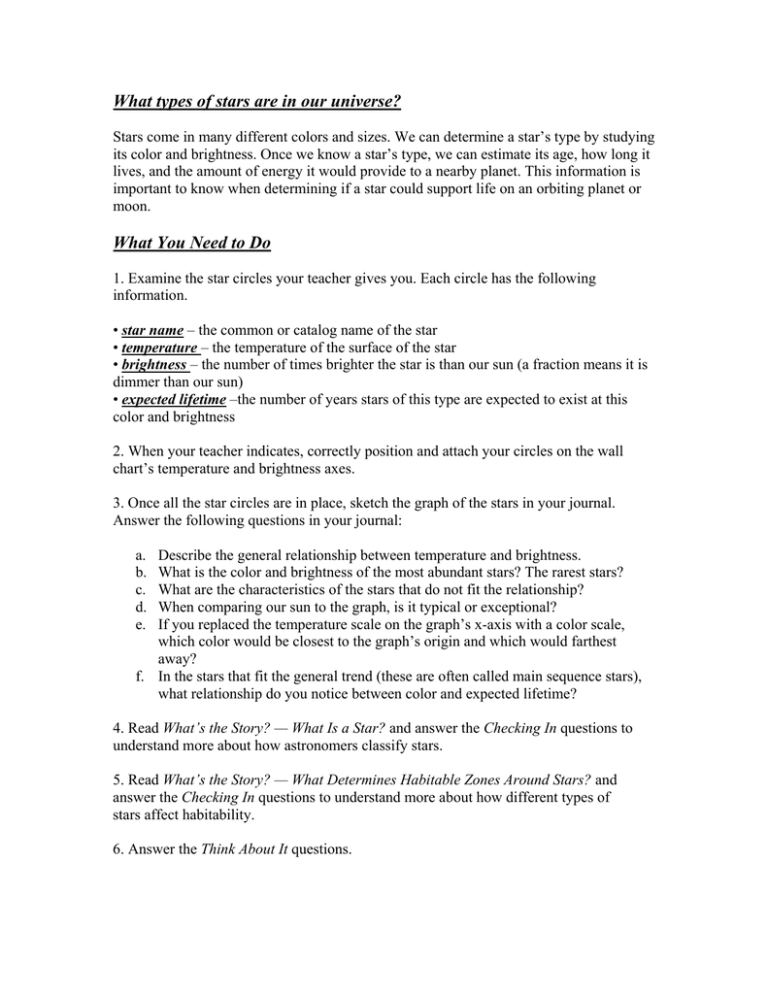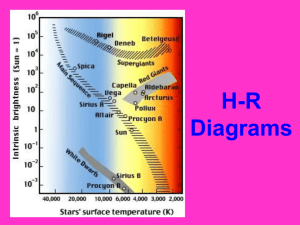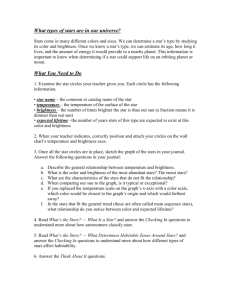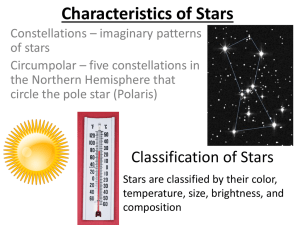What types of stars are in our universe?
advertisement

What types of stars are in our universe? Stars come in many different colors and sizes. We can determine a star’s type by studying its color and brightness. Once we know a star’s type, we can estimate its age, how long it lives, and the amount of energy it would provide to a nearby planet. This information is important to know when determining if a star could support life on an orbiting planet or moon. What You Need to Do 1. Examine the star circles your teacher gives you. Each circle has the following information. • star name – the common or catalog name of the star • temperature – the temperature of the surface of the star • brightness – the number of times brighter the star is than our sun (a fraction means it is dimmer than our sun) • expected lifetime –the number of years stars of this type are expected to exist at this color and brightness 2. When your teacher indicates, correctly position and attach your circles on the wall chart’s temperature and brightness axes. 3. Once all the star circles are in place, sketch the graph of the stars in your journal. Answer the following questions in your journal: a. b. c. d. e. Describe the general relationship between temperature and brightness. What is the color and brightness of the most abundant stars? The rarest stars? What are the characteristics of the stars that do not fit the relationship? When comparing our sun to the graph, is it typical or exceptional? If you replaced the temperature scale on the graph’s x-axis with a color scale, which color would be closest to the graph’s origin and which would farthest away? f. In the stars that fit the general trend (these are often called main sequence stars), what relationship do you notice between color and expected lifetime? 4. Read What’s the Story? — What Is a Star? and answer the Checking In questions to understand more about how astronomers classify stars. 5. Read What’s the Story? — What Determines Habitable Zones Around Stars? and answer the Checking In questions to understand more about how different types of stars affect habitability. 6. Answer the Think About It questions.







